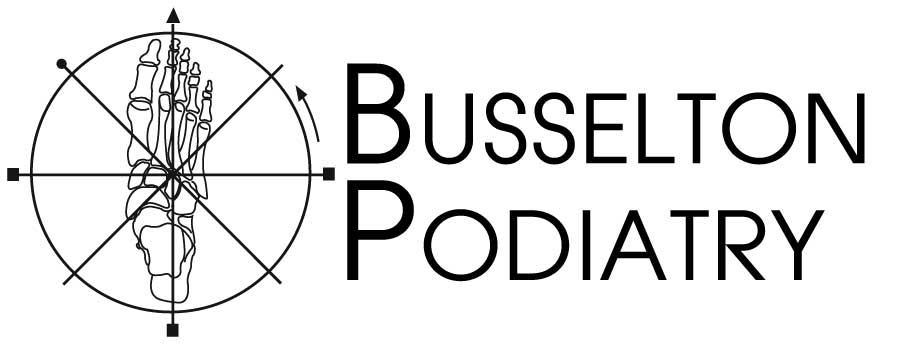Heel Pain/Plantar Fasciitis
Plantar Fasciitis is a very common and very painful cause of heel pain. It is a result of micro tears to the long fibrous ligament that attaches to the heel bone and extends along the arch to the toes. Pain is usually worse on arising, generally when first weight bearing in the mornings or after sitting for a period of time. Patients often think they have bruised the heel, but don’t recall any ‘one off’ traumas to the foot.
The pain gradually increases over weeks with symptoms increasing and activity levels decreasing. The podiatrists at Busselton podiatry will perform a full biomechanical and gait assessment. They will then go through with you, in detail, the required treatment plan to successfully treat this very painful condition.
Severs/ Heel Pain in Children
Severs or severs disease is a common cause of heel pain in children. It generally occurs in active girls between ages 7-13 years and boys between 9-15 years. The cause is due to repetitive strain of the Achilles tendon insertion into the growth plate of the heel bone. Pain usually occurs during, or soon after physical activities. Children often will also walk with a limp when first arising in the morning.
Orthotics
Busselton podiatry specialises in prescribing and manufacturing orthotics.
Orthotics are custom made shoe inserts, used to treat many foot postural conditions. Orthotics correct poor biomechanical and joint related issues. The podiatrists at Busselton Podiatry will assess your joint rant of motion, biomechanics, foot wear and overall postural concerns. If custom prescribed orthotics are required, you will be given detailed on information on your requirements.
Common conditions orthotic therapy is needed for include:
- Plantar Fasciitis/heel pain
- Bunion pain
- Shin pain
- Runners knee
- Severs in children
- Achilles tendonitis
- Arch pain
- Growing pains
- Lower back pain
- Mortons Neuroma
- Generalised aching of feet
Busselton Podiatry uses its own professional orthotic lab. We use 3D scans or plaster cast techniques in the orthotic manufacturing process. Orthotic adjustments and recovers are able to be done within a quick time frame. We do not charge for orthotic review appointments or any adjustments to orthotics we have manufactured.
Shin Splints
Shin splints is a generalised term relating to pain along the shin bones. It is a common condition in the sporting world, with pain increasing with increased levels of activity and subsiding after activities stop.
Pain is due to micro trauma to muscles attaching to the leg bones. Shin splints is a complicated condition with many factors contributing to the cause. These include, but are not limited to, tight calf muscles, poor foot wear, flat feet, pronated feet, running on hard surfaces and high rigid arches. Untreated shin splints puts you at risk of developing shin fractures. A condition called compartment syndrome will result in similar symptoms to shin splints.
The podiatrists at Busselton podiatry will diagnose your leg pain and guide you through a treatment plan on how to successfully treat your condition.
Routine Podiatry
General foot care is very important in maintaining happy, healthy, pain free feet. The podiatrists at Busselton Podiatry are highly qualified and experienced in all aspects of general, and often ongoing foot care requirements.
General foot care involves treatment for:
- Corns
- Callous
- Ingrown nails
- General nail care
- Warts
- Fungal infections
- Diabetic foot assessments
- Orthotic reviews
Growing Pains
Growing pain is a very common complaint both in boys and girls aged 4-12 years. Pain is characterised by aching in the legs, usually at night when the child is in bed. Pain is almost always worse after a very active day. The pain is NOT caused by the act of growing. The pain is due to the leg muscles becoming inflamed after a normal day’s activity when the child is resting. The leg muscles in active children become over worked as they run and play during the day. When the child is resting, these muscles fill with blood (become inflamed) this increased amount of blood causes pressure on nerve endings and symptoms occur. Often, if the child simply elevates their feet and flexes the feet backwards/forwards, the pain quickly ceases.
Treatment first involves a correct diagnosis and then advice on suitable footwear, activities to avoid, advise on what treatments do or do not work (such as use of ice or use of heat), orthotics and anti-inflammatory measures.
